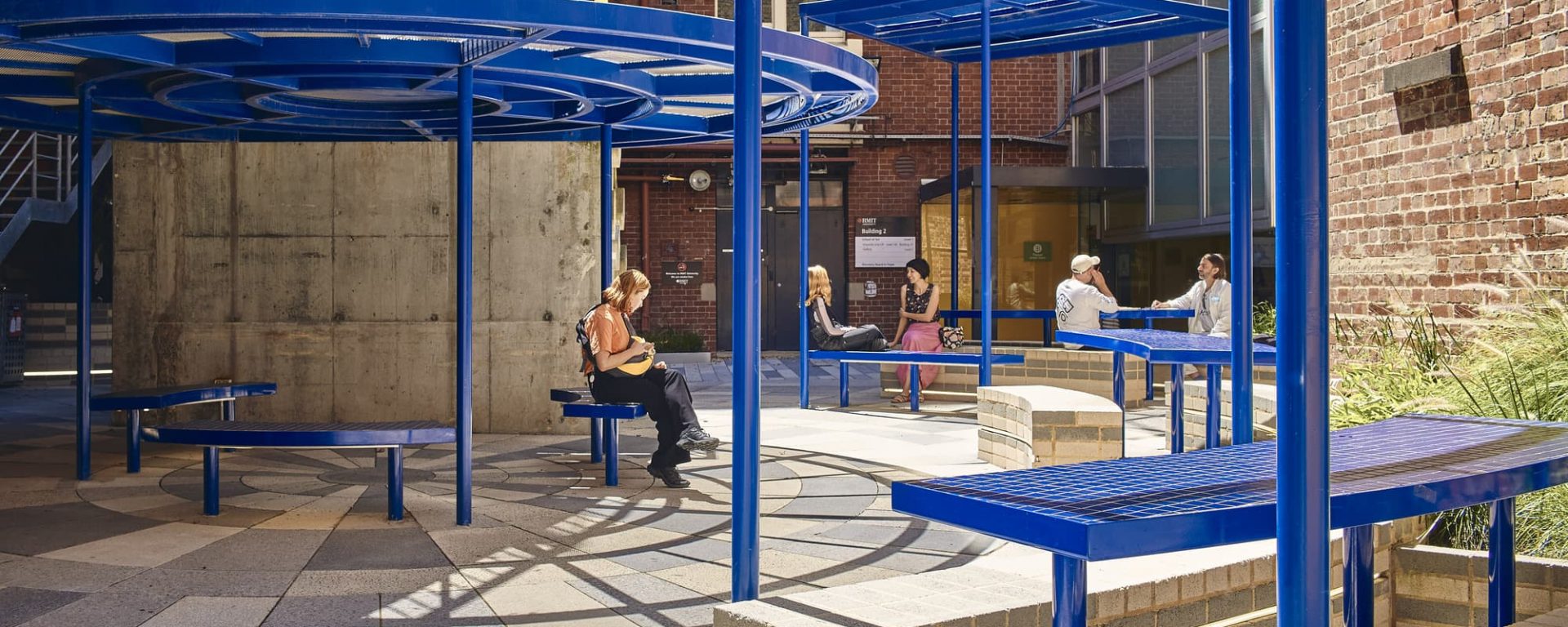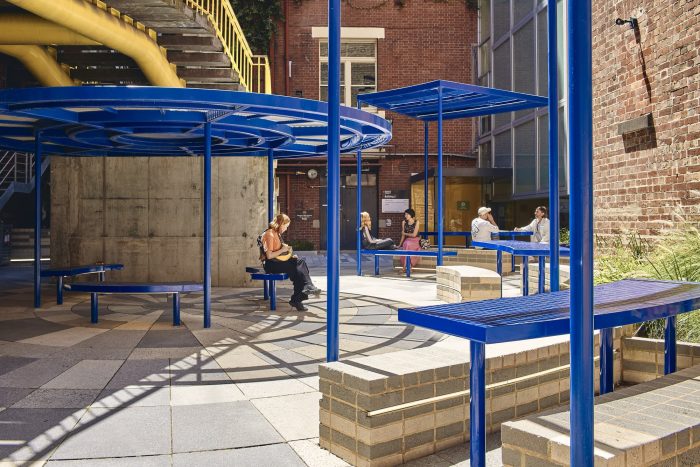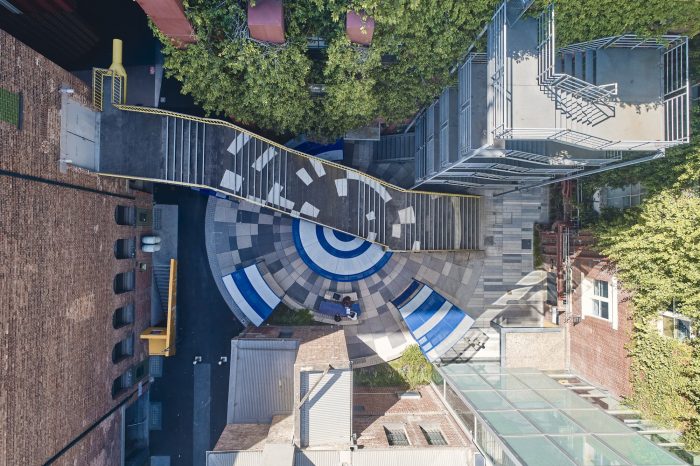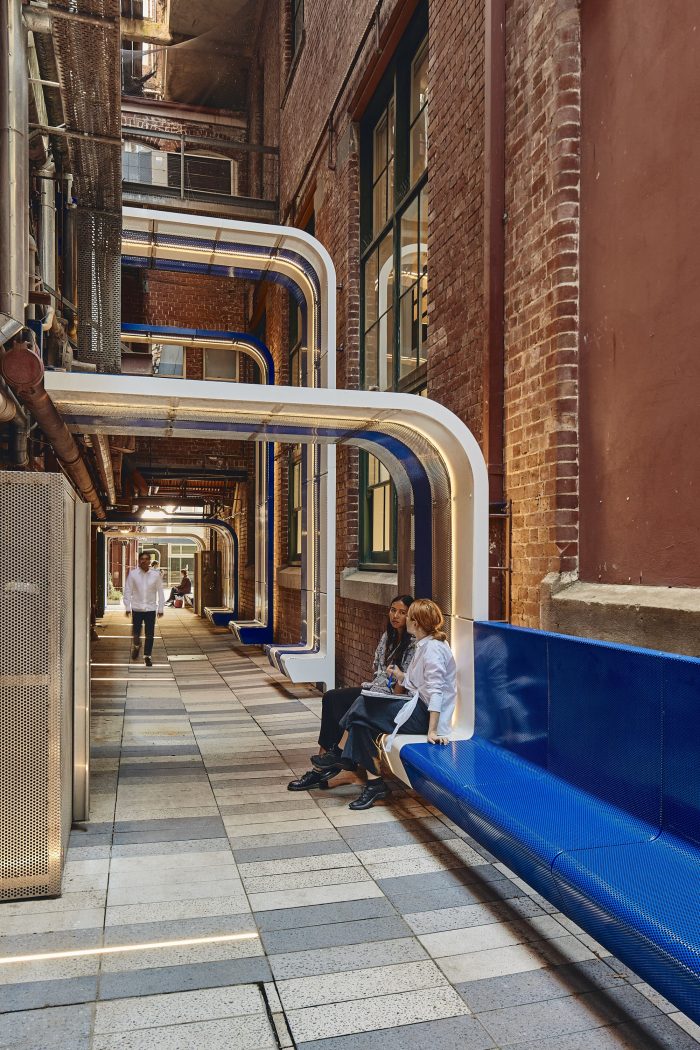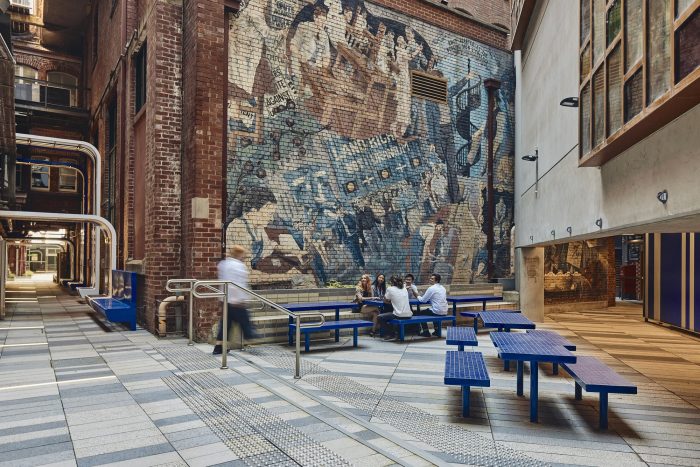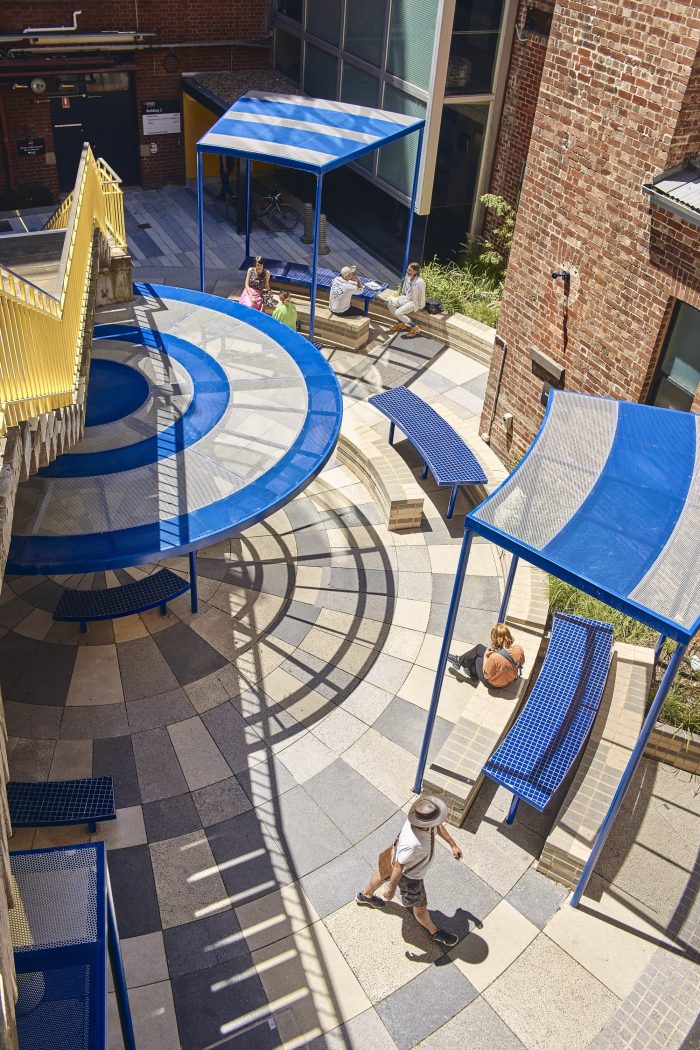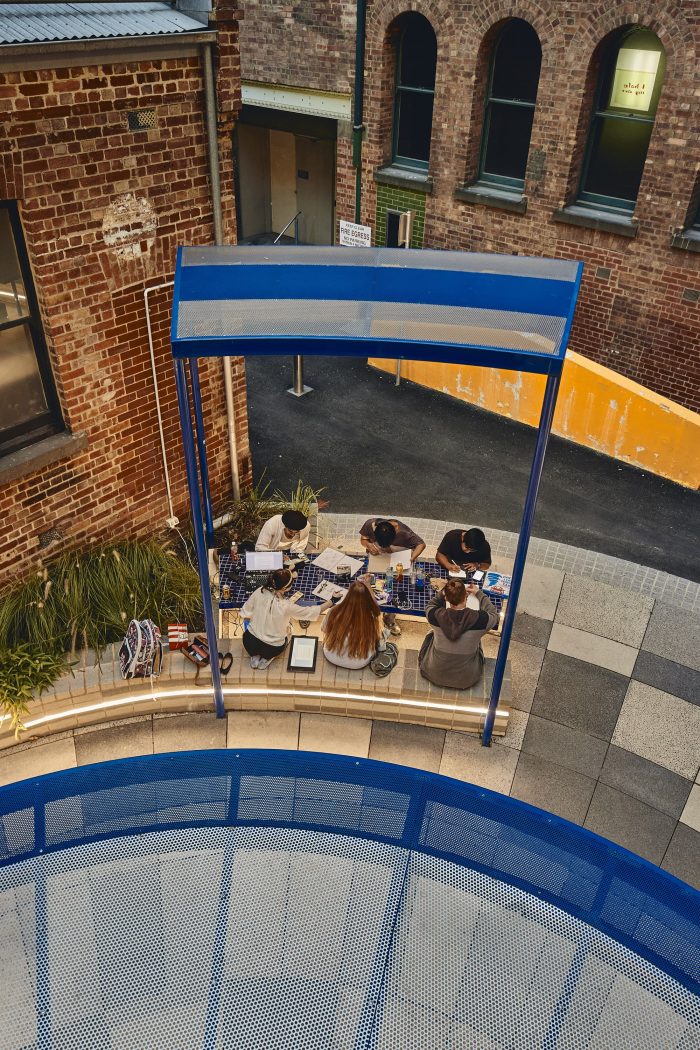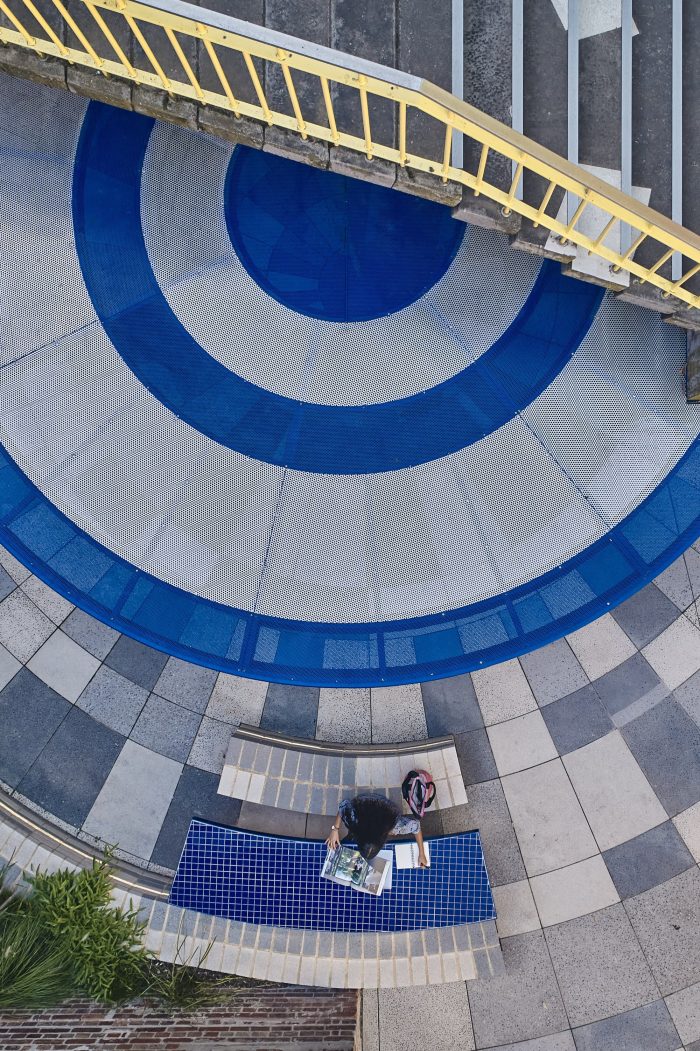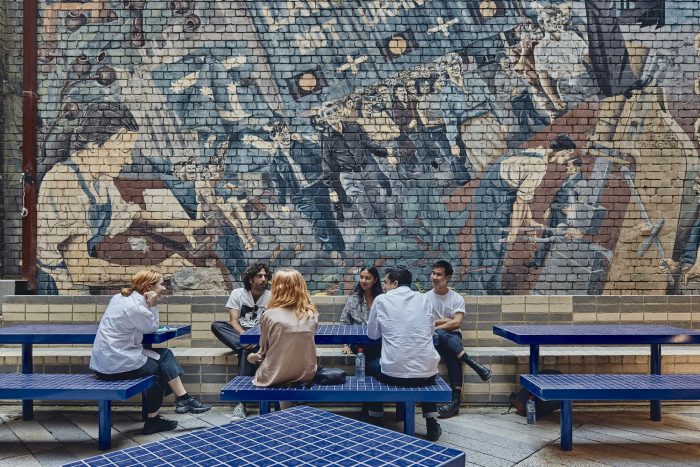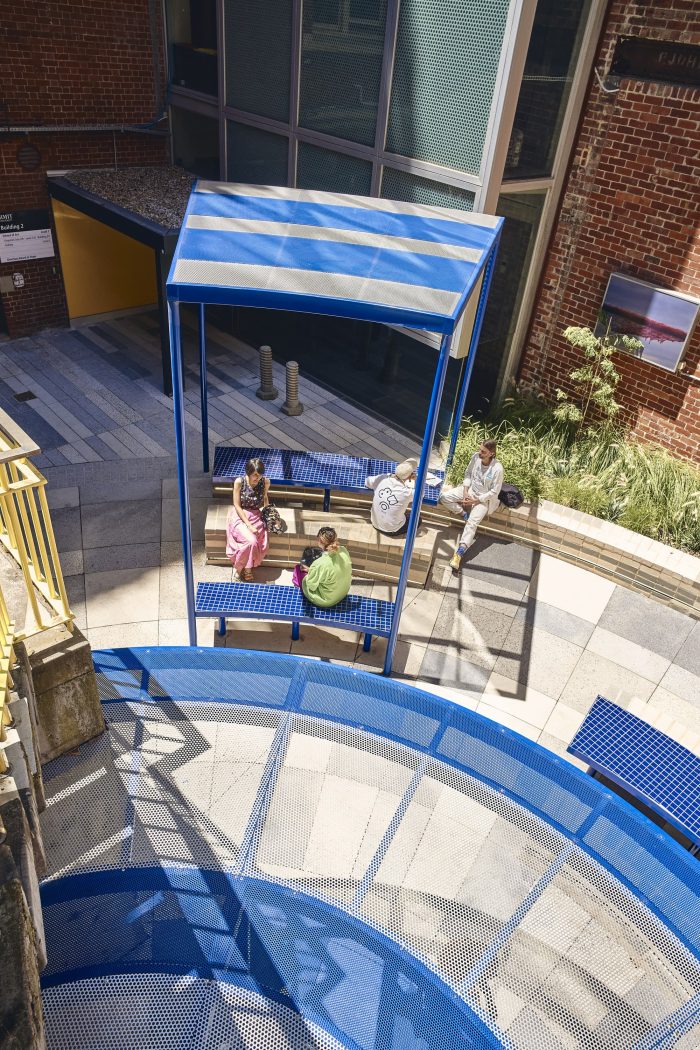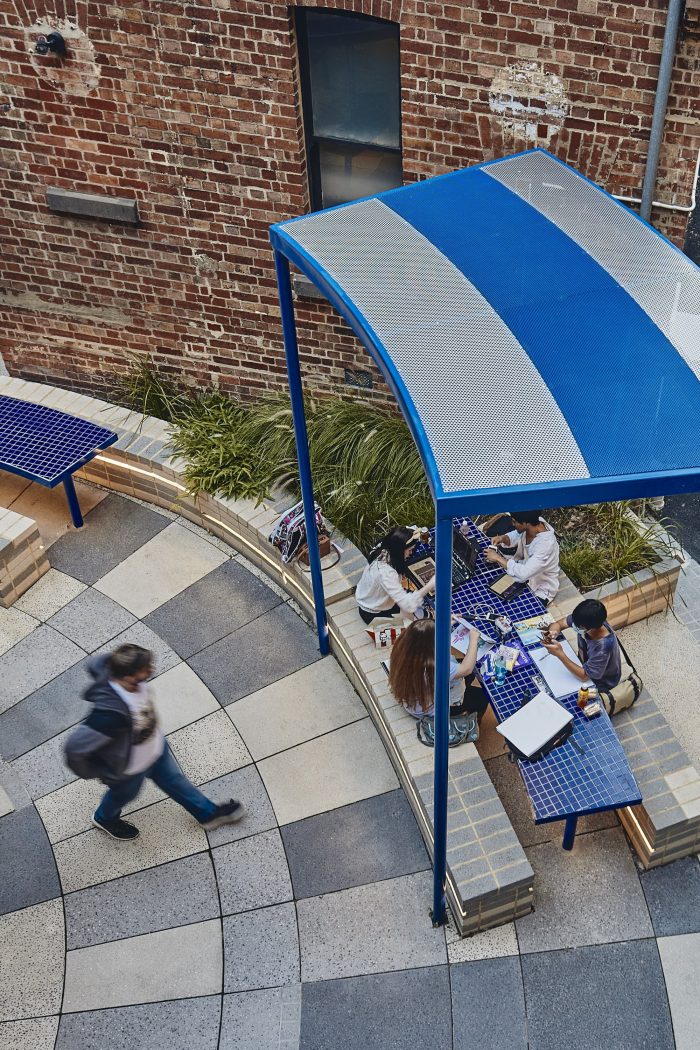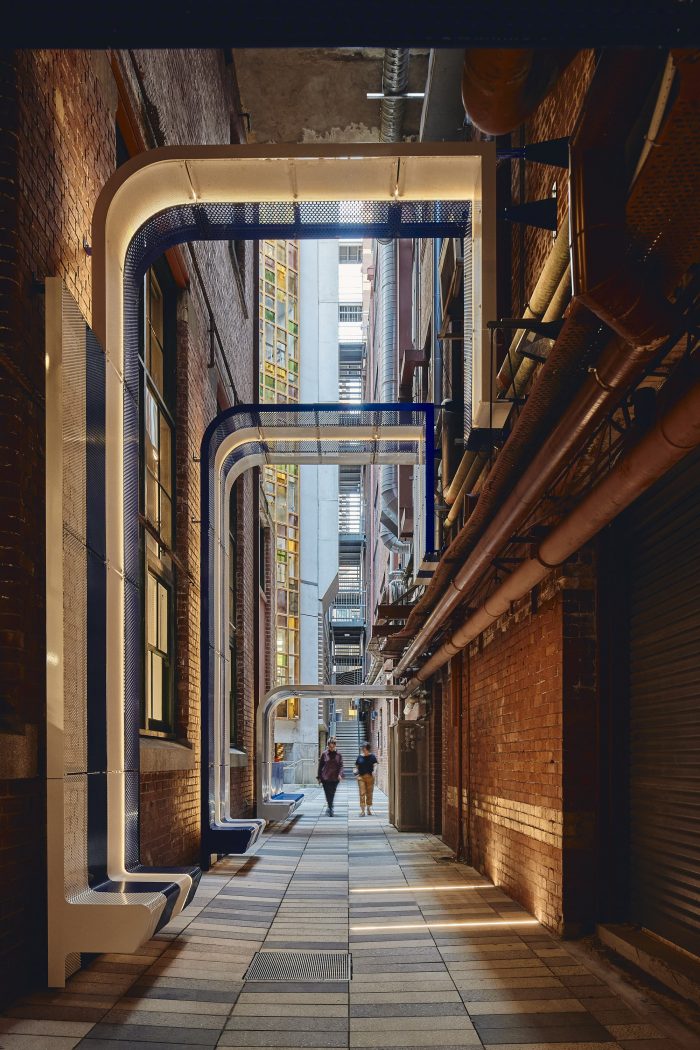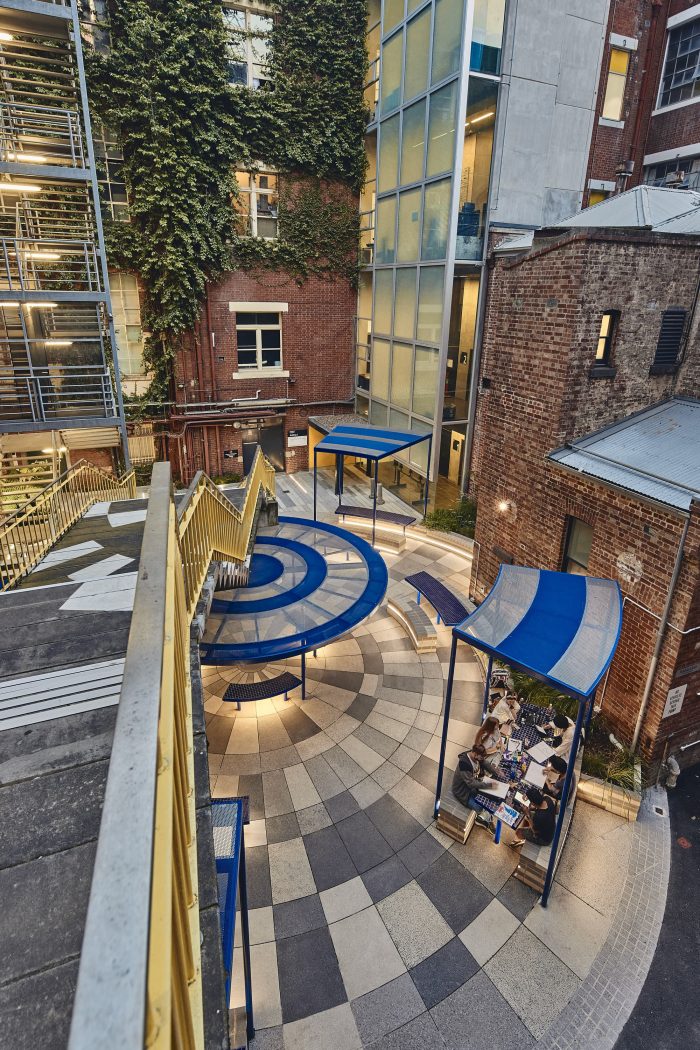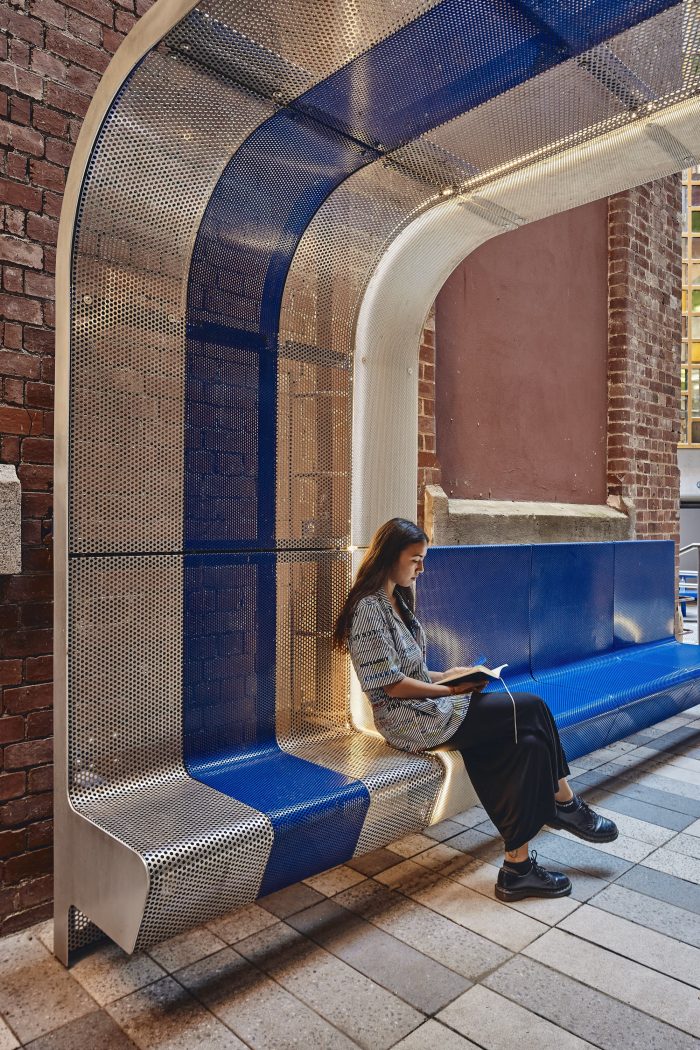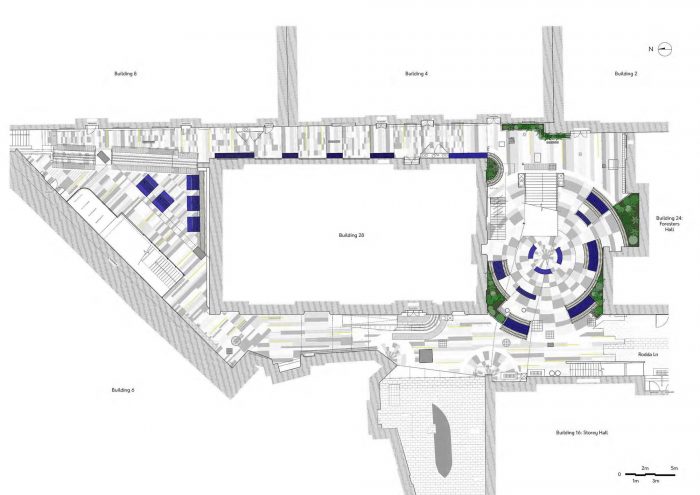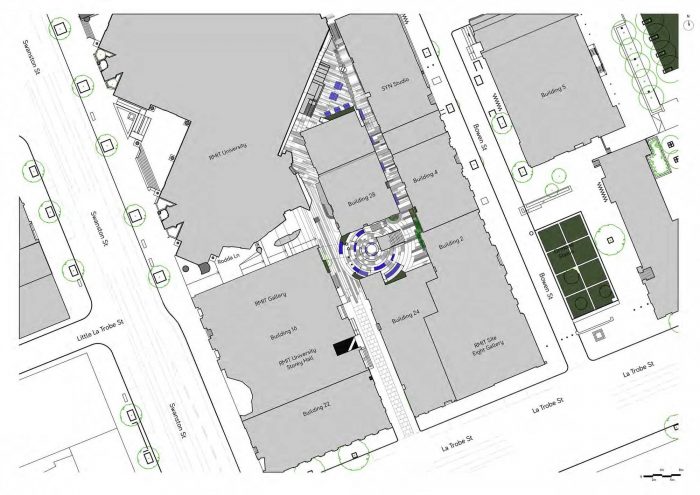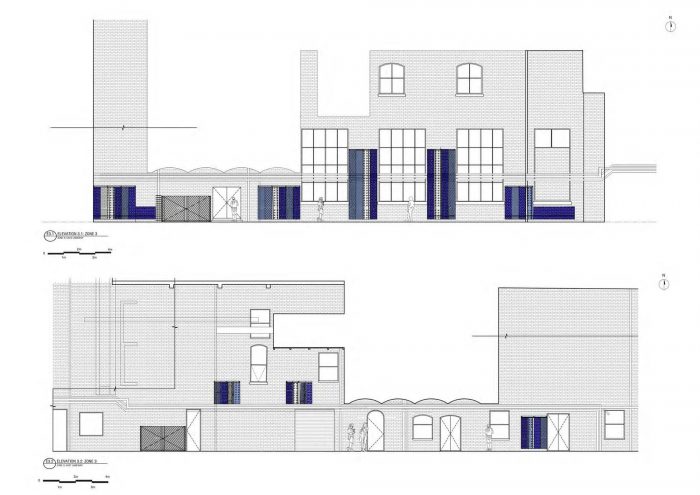该项目构成了皇家墨尔本理工大学公共领域振兴的一部分,将未被充分利用的空间转变为一个生动而温馨的地方。这是在罗达巷实现的,通过增加户外的灵活空间,改善学生的生活环境,将屋后的巷道拼接起来,为城市校园提供一个新的焦点。
This project forms part of the revitalisation of RMIT University’s public realm, transforming under-utilised spaces into a vivid and welcoming place. This is achieved at Rodda Lane by stitching together the warren of back-of-house laneways to provide a new focal point to the city campus through the addition of outdoor flexible spaces to improve student amenity.
该项目的简介要求改善皇家墨尔本理工大学校园内巷道区的便利性,将一系列遗留的、不相干的、不连贯的空间(在Bowen、La Trobe和Swanston街之间)集中起来,同时反映皇家墨尔本理工大学的文化,并考虑该地的丰富遗产。
The brief for the project called to improve the amenity of the laneway precinct within the RMIT city campus by bringing together a series of left-over, disparate, and disjointed spaces (between Bowen, La Trobe and Swanston Streets) while reflecting RMIT’s culture, and considering the rich heritage of the site.
设计反应围绕着两个院子,作为该区社会活动的锚。新的定制座椅和类似凉棚的结构被设置在花坛中,同时增加照明,以改善学生的户外体验。这些庭院由狭窄的巷道连接,具有令人印象深刻的垂直体积:这些走廊的新座位和照明寻求强调现有的空间,同时提供新的居住场所。多种城市基础设施允许多样化的空间和使用(为了不使一个空间被一个特定的用户所支配)。所有这些设计策略都有助于提高校园安全。
The design response centers around two courtyards that act as anchors for social activity in the precinct. New custom seating and pergola-like shade structures are set among planters along with increased lighting to improve the outdoor student experience. These courtyards are joined by tight narrow laneways with impressive vertical volumes: new seating and lighting in these corridors seek to accentuate the existing spaces while providing new places to dwell. The multiple urban infrastructures allow for diverse spaces and use (in order that not one space is dominated by a particular user). All of these design strategies contribute to increased campus safety.
该项目将城市的结构延伸到校园内,将墨尔本典型的巷道体验带入大学。在一个具有丰富建筑意义的背景下,设计方法旨在为地面引入一个新的身份。为了创造一种场所感和凝聚力,我们使用了一种强烈的单一色调将这些空间粘合在一起。蓝色、浅灰色和白色的色调与现有的色调形成了对比。这加强了用户对地方的依恋。最近在Rodda Lane的现场,Sibling见证了一对纠缠在一起的恋人、一个漫画绘画俱乐部、安全巡逻、一只刚出生的小狗被带出去嬉戏,还有学生经过,所有这些都在一个小时内发生。该项目提供了一个探索,即介于两者之间的空间如何通过其快乐的占领而成为庆祝的空间。
The project extends the fabric of the city into the campus, bringing the quintessential laneway experience of Melbourne into the university. Amid the backdrop of a context steeped in rich architectural significance, the design approach seeks to introduce a new identity to the ground plane. To create a sense of place and cohesion, a strong singular palette was used to glue these spaces together. Hues of blue, light-grey and white act as a contrasting counterpoint to the existing palette. This strengthens an attachment to place for users. Recently onsite at Rodda Lane, Sibling witnessed entwined lovers, a manga drawing club, security patrols, a new-born puppy being taken out for a frolic, and students passing through, all in one hour. The project offers an exploration of how in-between spaces become spaces of celebration through their joyous occupation.
可识别的方向对于更受欢迎和更安全的空间也很重要。一个有节奏的定制混凝土铺装和灯光的模式为校园提供了方向指引,在地面上发出了运动、速度和刺激的信号。铺装变成了一个同心的区域,促使居民进入空旷的地方,在这些社会空间里停顿。铺装图案在上方投射到定制的穿孔遮阳结构上,并翻转起来延伸到垂直表面上,形成座位循环,形成居住的场所。当人们移动到罗达巷升级改造的中心时,其他的视点就会显现出来,通过强大的视线来增强人们的安全感。
Legible orientation is also important for more welcoming and safer spaces. A rhythmic pattern of directional custom concrete paving and light provides wayfinding to the campus, signaling a sense of movement, speed and stimulation on the ground surface. The paving turns into a concentric zone, prompting inhabitants to enter the void and pause in these social spaces. The paving patterns are projected above to custom perforated shade structures and flip up to extend onto vertical surfaces, creating seating loops that form places of habitation. As people move to the centre of the Rodda Lane upgrade, other viewpoints are revealed, enhancing perceptions of safety with strong sightlines.
该项目的材料具有实用性、耐久性、保护性和低维护性,为客户提供了长期价值。它创造了一个更加可用和活跃的公共领域,增加了校园安全和学生的户外体验,通过清晰和专门的路标,同时帮助校园以一种有意义的方式连接到城市。这个项目强调了大学校园内共享公共领域空间的重要性,特别是在后COVID-19环境下户外空间的重要性。这些空间是负责将不同的空间和学生联系在一起的胶水,以使每个人都能享受他们的校园体验。
The project’s materiality is utilitarian, durable, protective and low maintenance providing long-term value for the client. It creates a more usable and activated public domain, increased campus safety and outdoor student experience, through clear and dedicated wayfinding while helping connect the campus in a meaningful way back to the city. This project highlights the importance of the shared public realm spaces within a university campus, and in particular the importance of outdoor spaces in a post-COVID-19 environment. These spaces are the glue that is responsible for tying together disparate spaces and students together in order that everyone can enjoy their on-campus experience.
Architects: Sibling Architecture
Year : 2021
Photographs :Peter Bennetts
Client : RMIT University
City : Melbourne
Country : Australia

